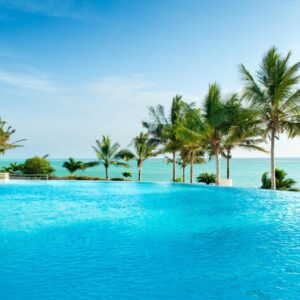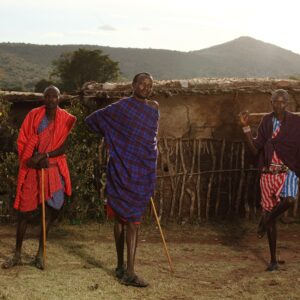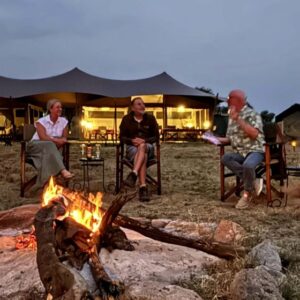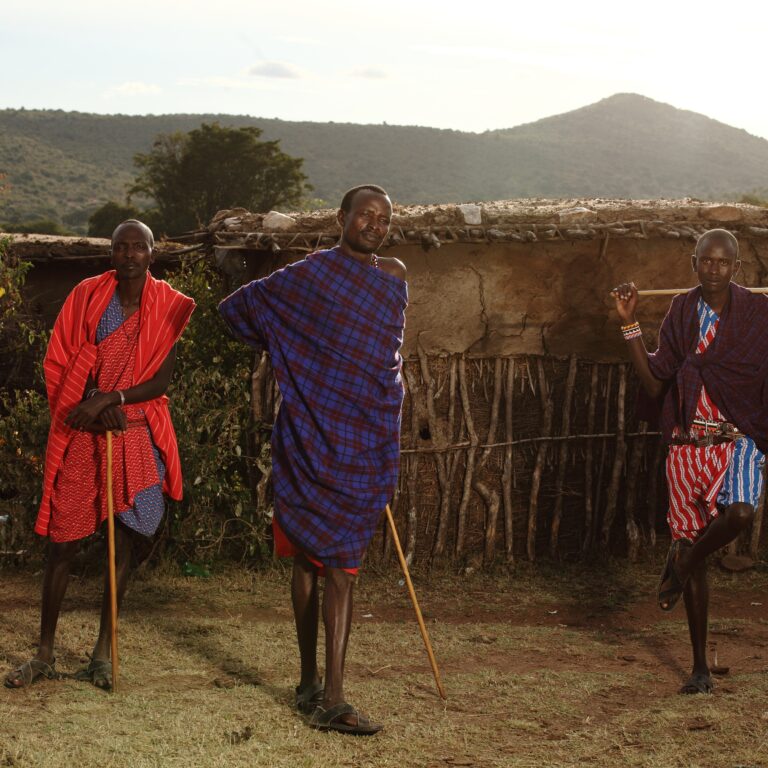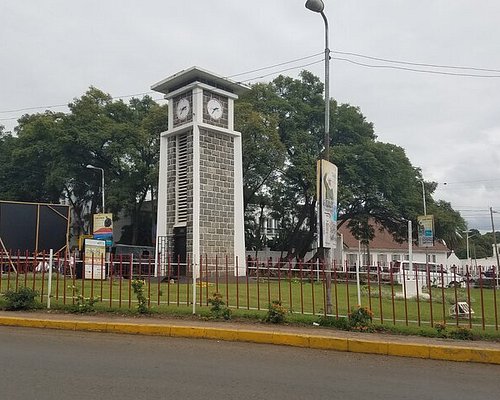Discover the top men’s hiking boots for Kilimanjaro include the Salomon Quest 4 GTX, Zamberlan 996 Vioz GTX, Lowa Renegade GTX Mid, Merrell Moab 3 Mid Waterproof, and Asolo Fugitive GTX due to their exceptional ankle support, waterproofing, durability, and comfort required for the mountain’s varying terrain and cold summit conditions. Key features to look for are a high-ankle cuff for stability, Gore-Tex waterproofing, a durable sole with good traction, and a comfortable, well-fitting design to prevent blisters.
Kilimanjaro. The name itself conjures images of a towering, snow-capped peak rising from the plains of Africa. It’s a mountain that calls to adventurers, promising breathtaking views and the immense satisfaction of reaching Africa’s highest point. But before you can stand on Uhuru Peak, you need to be prepared. And perhaps no piece of gear is more crucial to your success than your hiking boots. Your boots are your foundation, your connection to the ever-changing terrain of the mountain.
From the lush rainforests at the base to the dusty volcanic scree of the summit, your feet will take a beating. The right pair of boots will provide support, protection, and comfort, helping you prevent blisters and injuries that could end your climb prematurely. The wrong pair could turn a once-in-a-lifetime experience into a painful ordeal. In this article, we’ll explore some of the top men’s hiking boots recommended for Kilimanjaro, analyzing their strengths and weaknesses to help you make an informed decision.
Salomon Quest 4 Gore-Tex
The Salomon Quest 4 Gore-Tex is a perennial favorite for multi-day treks and demanding terrain. It’s often praised for its blend of a lightweight feel with the support of a more traditional backpacking boot. The boot’s most notable feature is the ADV-C 4D Chassis, which provides excellent ankle support and stability, crucial for navigating rocky and uneven paths. The Gore-Tex membrane ensures your feet stay dry through wet rainforests and slushy snow, while the Contagrip outsole offers reliable traction on a variety of surfaces. The Quest 4 is a great choice for climbers who want a stable and supportive boot without the bulk and weight of a full-leather model. However, some users have noted that the boot can be stiff and requires a proper break-in period.
Zamberlan 996 Vioz GTX
For those who prefer a more classic, durable approach, the Zamberlan 996 Vioz GTX is a top contender. This Italian-made boot constructed from full-grain leather, offering exceptional durability and water resistance. The Zamberlan Flex System allows for comfortable forward flex without compromising lateral support, a great feature for long days on the trail. The Vibram 3D outsole provides a strong grip and excellent downhill braking, a huge plus on Kilimanjaro’s steep descents. While the Zamberlan 996, a heavier and more expensive option, its robust construction and high-quality materials mean it’s built to last and will provide years of reliable performance on any serious trek. The trade-off for this durability is that it’s a heavier boot that may require a longer break-in period.Asolo Fugitive GTX
The Asolo Fugitive GTX strikes a balance between a traditional hiking boot and a more flexible, modern design. Made with water-resistant suede and a Gore-Tex lining, it offers reliable waterproofing and breathability. The boot known for its excellent underfoot protection and traction, with deep lugs that bite into loose terrain like the scree slopes of Kilimanjaro. It’s a great option for hikers who want stability and support but prefer a lighter feel than a full-leather boot. The Fugitive GTX often praised for having little to no break-in period, making it a “wear and go” option for many. However, some hikers with wider feet may find the toe box too narrow, and some reviews point to durability issues with the outsole separating from the midsole over time.Merrell Moab 3 Mid
The Merrell Moab has long been a popular choice for day hikers and backpackers alike, and the Moab 3 Mid continues that legacy. This boot its a fantastic budget-friendly option that’s known for its out-of-the-box comfort. It has a supportive footbed, a cushioned midsole, and a Vibram TC5+ outsole for grip. The waterproof version will keep your feet dry in light rain and wet conditions. For Kilimanjaro, the Moab 3 Mid works well for the lower, less technical sections of the climb. However, it provides less ankle support and overall stiffness compared to other boots on this list, making it a less ideal choice for the steep, rocky terrain and heavy pack loads of the upper mountain. It is often recommended as a great second pair of boots for the lower slopes or for camp shoes.Vasque Breeze
The Vasque Breeze is another boot that delivers on comfort and support. It’s known for its generous toe box, making it a good fit for hikers with medium to wide feet. The Breeze is relatively stiff and durable, making it a solid choice for rocky and uneven trails. The Vasque-specific waterproof membrane works well to keep feet dry, and the outsoles provide a good compromise between traction and longevity. It has a high lacing system that provides excellent ankle support, a key feature for a successful Kilimanjaro climb. Like other stiff boots, it does require a break-in period, and some users have noted that the lace buckles can have sharp edges.Scarpa Rush TRK GTX
The Scarpa Rush TRK GTX is a boot that embodies the “fast and light” mountaineering philosophy, but with a more comfortable, hiking-focused design. It’s built for agility and comfort, with technologies designed to reduce foot fatigue. The boot features a high-traction outsole and a dual-density midsole that provides both cushioning and support. The 3D Autofit collar and Gore-Tex membrane ensure your ankles protected and your feet stay dry. The Rush TRK GTX is a great option for experienced hikers who value a lightweight, agile boot that still offers the necessary stability for demanding trails. Its fit is slightly wide, which is good for those with broader feet.La Sportiva Nucleo High II GTX
La Sportiva is a brand synonymous with mountain sports, and the Nucleo High II GTX is a testament to that heritage. This boot is a perfect blend of waterproofing and breathability, thanks to its Gore-Tex Surround technology. The Vibram Nano outsoles with an Impact Brake System offer excellent grip on varied terrain. The 3D Flex ankle hinge is a standout feature, allowing for natural ankle movement while still providing a high degree of stability. This boot its known for its out-of-the-box comfort and lightweight feel, making it an excellent choice for a wide range of trails. However, some users have noted concerns about the boot’s long-term durability.Renting Boots Before Climbing Mount Kilimanjaro
While it’s highly recommended to use your own well-broken-in boots for a climb like Kilimanjaro, renting, a viable option for some. Many local tour operators and rental shops in Tanzania offer a range of hiking boots.Pros of Renting:
Cost-Effective: It’s a great way to access high-quality gear without the hefty upfront cost, especially if you don’t plan on hiking frequently after your trip.
Travel Convenience: Renting locally means you don’t have to worry about packing bulky, heavy boots in your luggage, potentially saving on airline baggage fees.
Quality Gear: Reputable rental companies often provide top-of-the-line boots, specifically suited for the conditions on Kilimanjaro.
Cons of Renting:
Fit and Comfort: This is the biggest risk. Unlike a new pair of boots, you’ve had time to break in, rented boots may not fit your feet perfectly and could lead to blisters and discomfort.
Availability: There is no guarantee that the shop will have your specific size or preferred model available, especially during peak climbing season.
Condition of Boots: While most reputable companies maintain their gear well. There’s always a chance you could receive a pair of boots that worn out or have not been properly cleaned.
If you choose to rent, make sure to inspect the boots thoroughly before accepting them and spend as much time as possible wearing them around camp before the real trekking begins.
Men’s vs Women’s Best Hiking Boots for Kilimanjaro
There not no significant difference in the fundamental “best” hiking boot for Kilimanjaro between men and women; the key factor its a proper fit for your individual foot shape and size, rather than the gendered design of the boot. Look for waterproof, breathable (Gore-Tex), mid-weight boots with good ankle support to handle varied terrain, rocky trails, and icy conditions, especially on summit night. Brands like Salomon and Asolo offer excellent options for both genders, providing comfort and protection for multi-day climbs.
Key Considerations for choosing the best hiking boots for Kilimanjaro
Fit: This is the most crucial factor. Boots must fit your foot snugly and comfortably without being too tight or too loose, which can lead to blisters.Waterproof & Breathable: Gore-Tex is a common material that provides a waterproof and windproof outer shell while remaining breathable, which is essential for comfort on long treks.
Ankle Support: Kilimanjaro’s terrain includes roots, rocks, and ice, so a boot with a higher cuff for strong ankle support is necessary to prevent injuries.
Mid-weight Construction: A mid-weight boot provides the right balance of support, durability, and flexibility for varied conditions.
Insulation (for Summit Night): While fully insulated boots not needed, warm socks and potentially lightly insulated boots or toe warmers, recommended for the summit night’s freezing temperatures.
Best hiking boots for Kilimanjaro prices
The best hiking boots for Kilimanjaro range in price, with budget-friendly options like the Merrell Moab 3 Waterproof ($150) and Columbia Newton Ridge Plus II, mid-range boots like the Asolo Fugitive GTX and Salomon Quest 4D 3 GTX kilimanjaro shoes price (around $230-$250), and higher-end choices such as the Lowa Renegade GTX and La Sportiva Trango TRK GTX, which can be more expensive. Key features to look for include waterproofing, good ankle support, and durability, with the price point reflecting the quality and specialized features of the boot.
Best hiking boots for Kilimanjaro reviews
Top-rated hiking boots for Kilimanjaro, like the Salomon Quest 4D 3 GTX and Lowa Renegade GTX Mid Kilimanjaro hiking shoes, offer excellent ankle support, waterproofing, and comfort for diverse terrains, crucial for the varying conditions of the mountain. For heavy-duty, resilient options, consider boots such as the Asolo TPS 520, known for high-cut protection, while lighter hikers may prefer the Merrell Moab 3 Mid for lower-altitude portions but should be aware of its limited summit insulation.
Reviews of “Kilimanjaro shoes” often refer to shoes suitable for climbing Mount Kilimanjaro, not a specific brand of shoes named Kilimanjaro. Top recommendations include lightweight, waterproof, and well-cushioned hiking boots and trail shoes from brands like Salomon, Adidas Terrex, La Sportiva, Hoka, Vasque, and Scarpa. Key Kilimanjaro shoes review features to look for are ankle support, comfort for long treks, good grip for rugged terrain, and waterproof materials to keep feet dry.
Best women’s hiking boots for Kilimanjaro
The best women’s hiking boots for Kilimanjaro are waterproof, ankle-high boots with excellent traction and support, with popular choices including the Salomon X Ultra 4 Mid GTX, Salomon Quest 4 GTX, KEEN Targhee IV Mid, and Asolo Stynger, among the best walking boots for Kilimanjaro. Others like the La Sportiva Nucleo High II GTX and Lowa Renegade GTX. Key features to look for are a Gore-Tex membrane for waterproofing and breathability, a supportive midsole for stability on varied terrain, and a grippy outsole for traction on rocks and icy sections. Ultimately, the best boot is one that fits your foot well, as proper fit is crucial for comfort and to avoid blisters on long, demanding ascents.
FAQ: Top Men’s Best Hiking Boots for Kilimanjaro
Top-rated men’s hiking boots for Kilimanjaro include the Salomon Quest 4 GTX, Lowa Renegade GTX Mid, La Sportiva Trango TRK GTX, and Scarpa Zodiac Plus GTX top men’s best hiking boots for Kilimanjaro. Key features to the best trekking boots for Kilimanjaro look for are waterproofing (like Gore-Tex), excellent ankle support, durable construction for varied terrain, and comfort for long hikes. It’s essential to break in your boots thoroughly before the climb and wear them with quality merino or synthetic socks to ensure your feet stay dry.
What is the most important feature to look for in a Kilimanjaro hiking boot?
Comfort is king. A comfortable, well-fitting boot that you have properly broken in is the single most important factor. After that, look for boots that offer good ankle support, a stiff-ish sole for stability on rocky terrain, and a waterproof membrane like GORE-TEX to keep your feet dry.Do I need a mountaineering boot for Kilimanjaro?
No. Kilimanjaro is a trekking peak, not a technical mountaineering climb. A sturdy, mid-weight hiking boot is sufficient for the vast majority of the climb. Mountaineering boots are generally too heavy, stiff, and cumbersome for the varied terrain.How much break-in time is needed for new boots?
A minimum of 50 miles of hiking on varied terrain its often recommended. This allows the boots to mold to the unique shape of your feet and helps you identify any potential pressure points or issues before you get on the mountain.What about ankle support? Is a high-top boot necessary?
Yes, a high-top boot its strongly recommended. The trails on Kilimanjaro, especially on the rocky sections, are a prime location for twisting an ankle. A high-top boot provides crucial stability and support that can prevent injuries.Can I wear trail running shoes instead of boots?
While some experienced and fast trekkers might get away with it on the lower slopes, it’s not a recommended strategy. Trail running shoes lack the ankle support, durability, and waterproofing needed for the higher altitudes and varied conditions, particularly on the summit night and descent. Stick with a proper hiking boot to ensure your safety and comfort.The Ultimate Guide to Choosing the Perfect Footwear for Kilimanjaro
Trail Shoes vs. Boots on Kilimanjaro – Which are Better?
Top 6 Best Boots for Climbing Kilimanjaro
The Best Time to Plan Your Tanzania Honeymoon Safari
Best Shoes for Tanzania Safari: A Complete Guide to Comfortable and Durable Footwear

